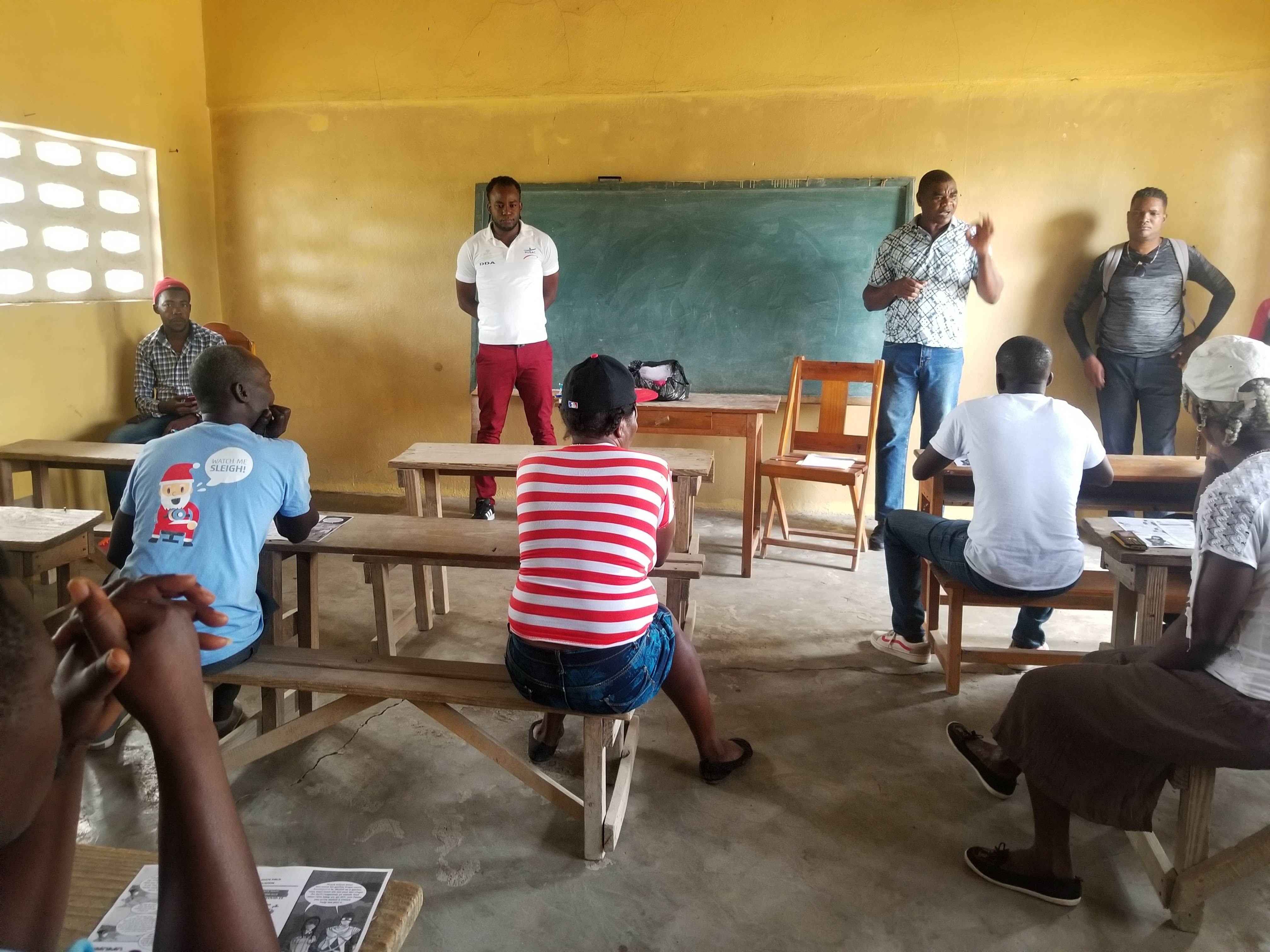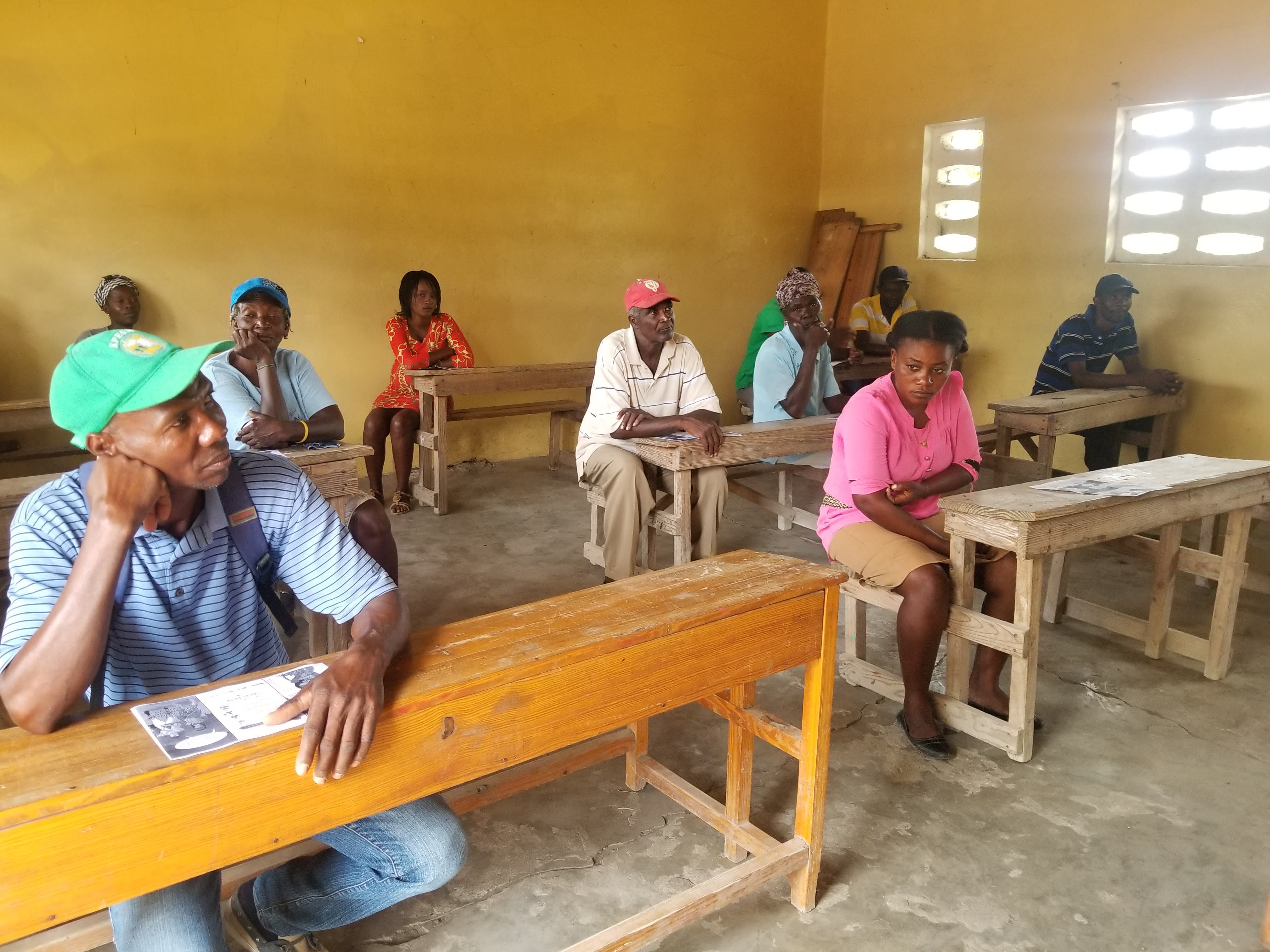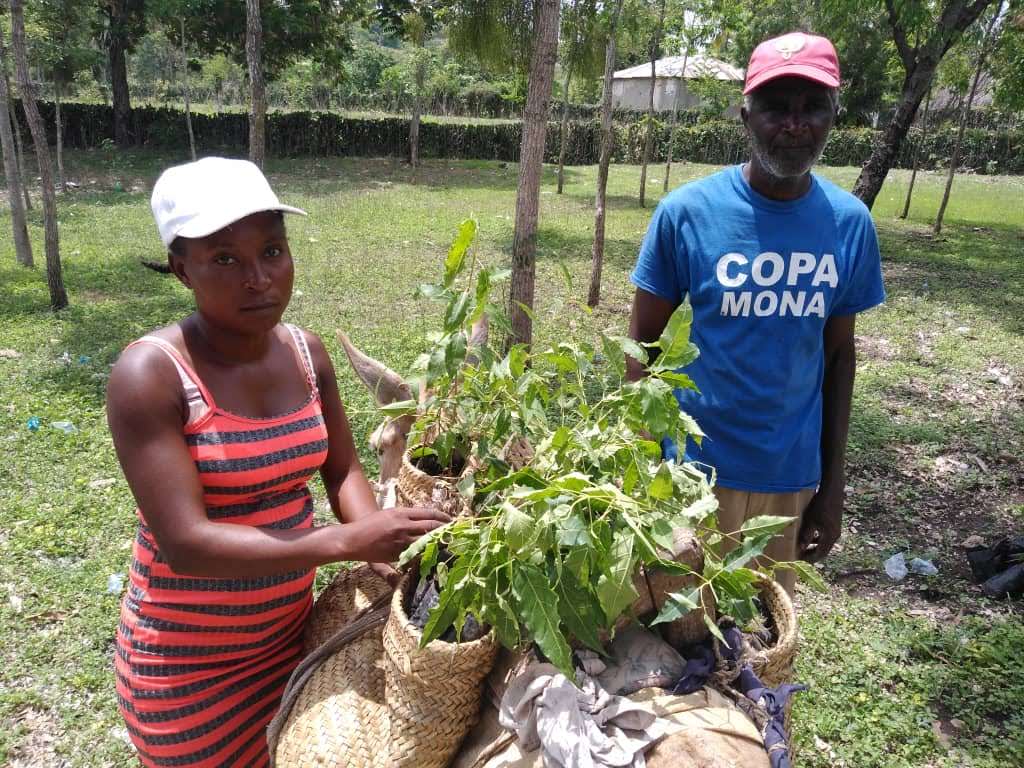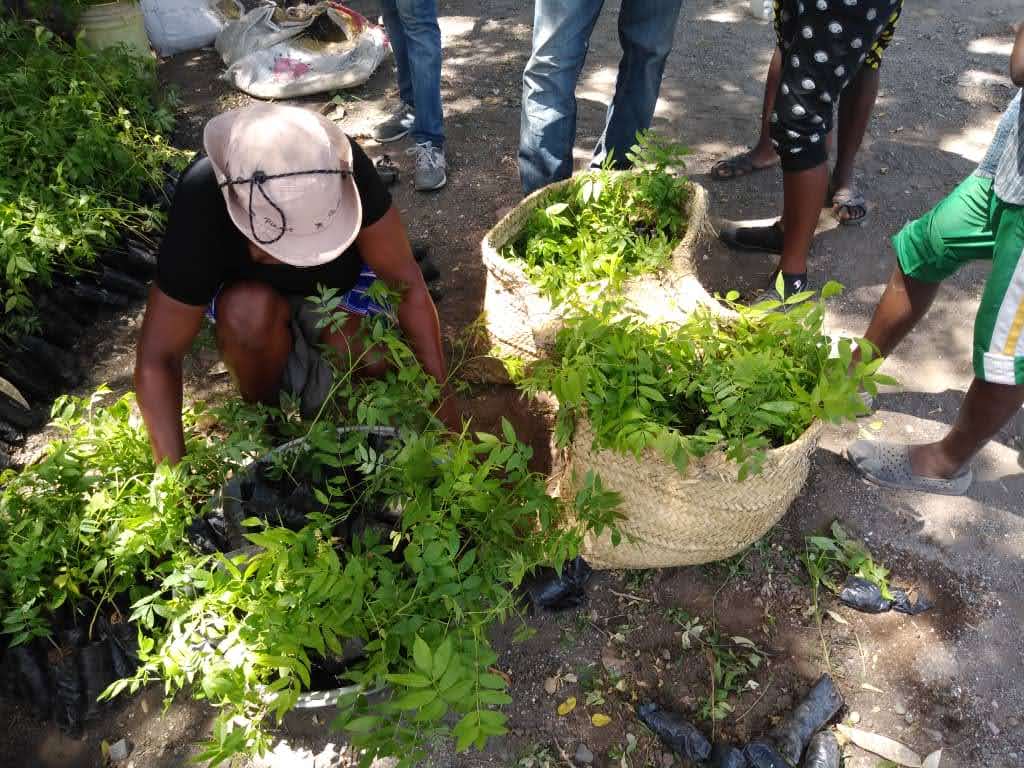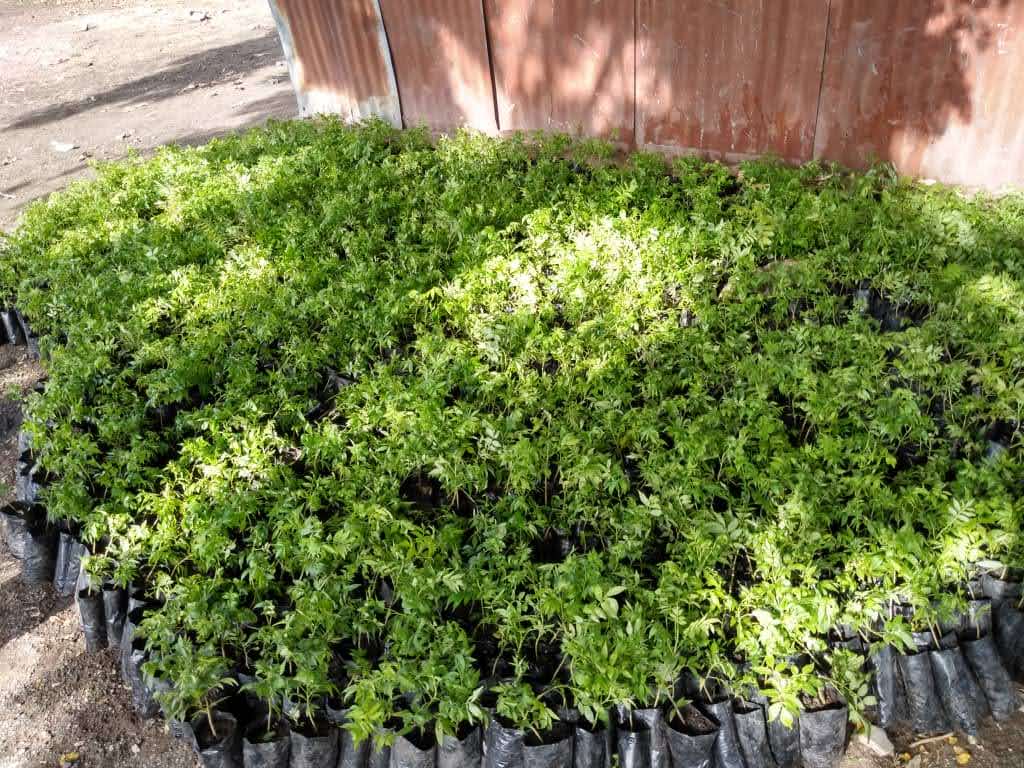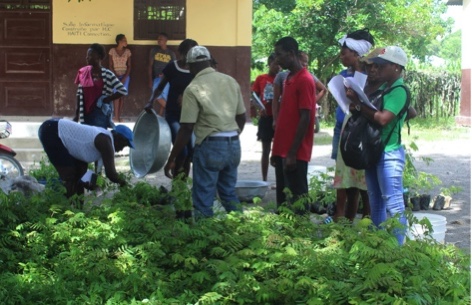 Agronomy team distributes 7,000 trees in Perou as part of Project Lorax
Agronomy team distributes 7,000 trees in Perou as part of Project Lorax
For those who have followed the trajectory of deforestation in Haiti through the years, one of the most common causal themes raised is the use of trees for charcoal production. Charcoal is still one of the principal fuels used in Haiti for cooking. People in rural areas can cut trees for charcoal production and sell them to brokers who then turn the wood into charcoal cubes. Some folk make the charcoal themselves to use and sell. Charcoal is probably over emphasized as a cause of deforestation (with the added effect that it places the blame on the survival strategies of the rural poor, not the large landowners that have driven them to poverty, or the agricultural policies that have undermined land distribution). That said, charcoal production is certainly part of the problem - at least if it is done in an uncontrolled way.
Recognizing that people rely on the coal making process as a means to earn money, the outreach team at the Jean Marie Vincent Formation Center launched “Project Lorax,” which is an effort to plant trees while also encouraging the sustainable use of some of those trees for charcoal production. The goals of the project are thus adapting to the reality that people are facing, while working with them to create a different kind of lived environment.
So, how does this work?
Project Lorax has been conceived as a three-year program. The members of the agronomy team (Teligene, Aneus, and Jollete) are working with 117 families in Perou, all of whom have a common goal/need and that is to raise funds to ensure their children can participate in school. For many years, the families in the area participated in coal production as a means to earn an income. The agronomy team is helping them continue to do this, but in a way that ensures there will be more trees in the ground when they are done. This is done by creating monetary incentives to plant and nurture the trees over time, until some can be harvested for charcoal.
During the 1st year, the families planted 40,000 trees. During years 2 and 3, each family will receive a small stipend of 10 HTG for each tree that is still living. Families must have 60% of the trees still living (they could replant on their own to reach this threshold if needed) in order to qualify for the “star planter stipend.”
The trees that were planted are fast growing, and regenerate themselves easily from shoots. The idea is to harness something the families already know how to do (make charcoal) but do it in a more intentional & sustainable manner. Project Lorax purchased the trees from 3 tree nurseries - including our nursery at Grepen. The project also provided the families with 50% of the compost that they would need for the trees, and the families produced the other 50% of the compost.
After three years, the trees are supposed to be large enough to harvest for charcoal. which means the families will make charcoal to pay for school rather than receiving the cash incentive for growing their trees. Because the trees are fast growing, rotating the planting and harvesting of the trees in three year cycles means that families should always have trees for charcoal, while others trees are still in the ground and growing.


